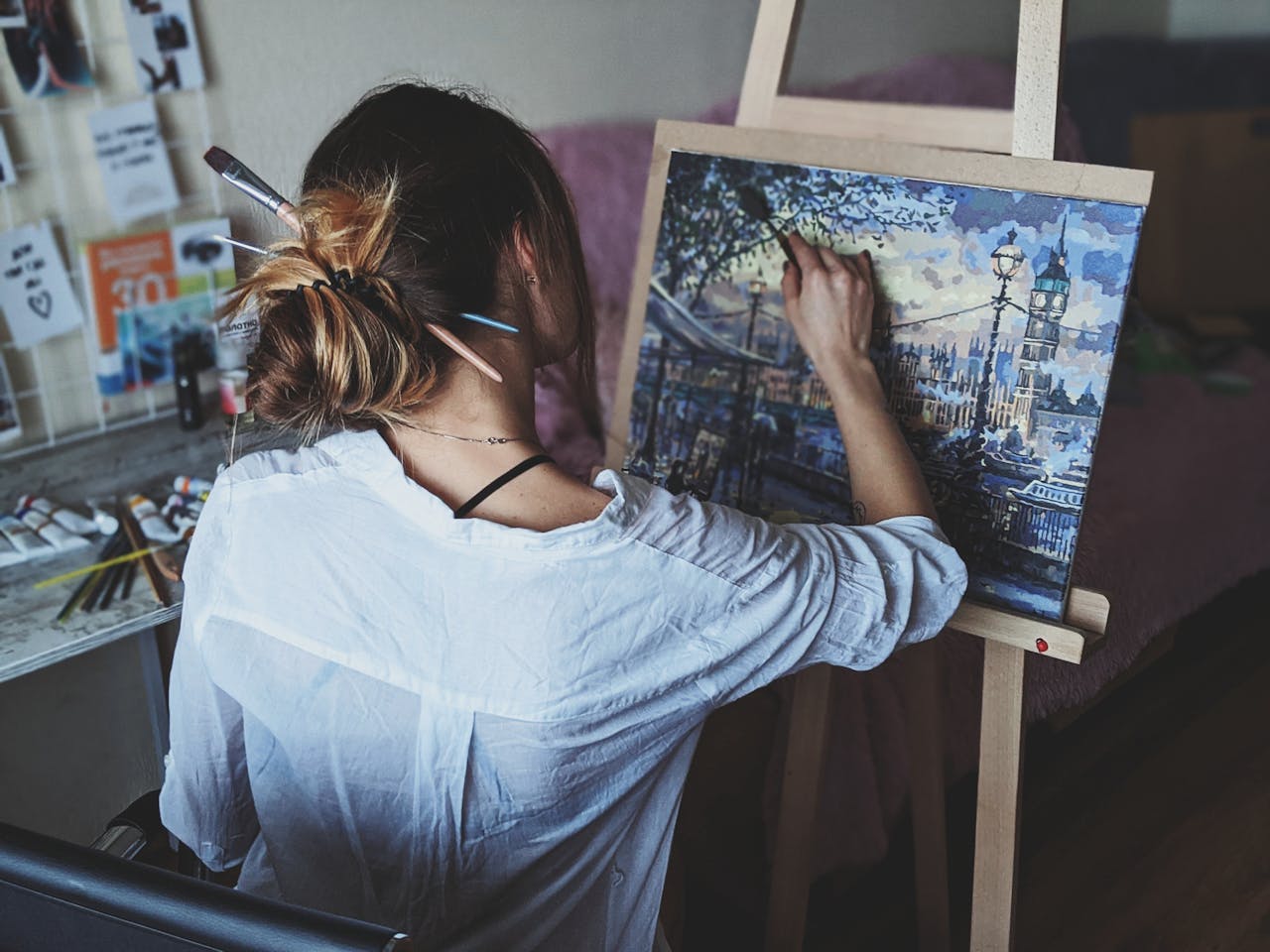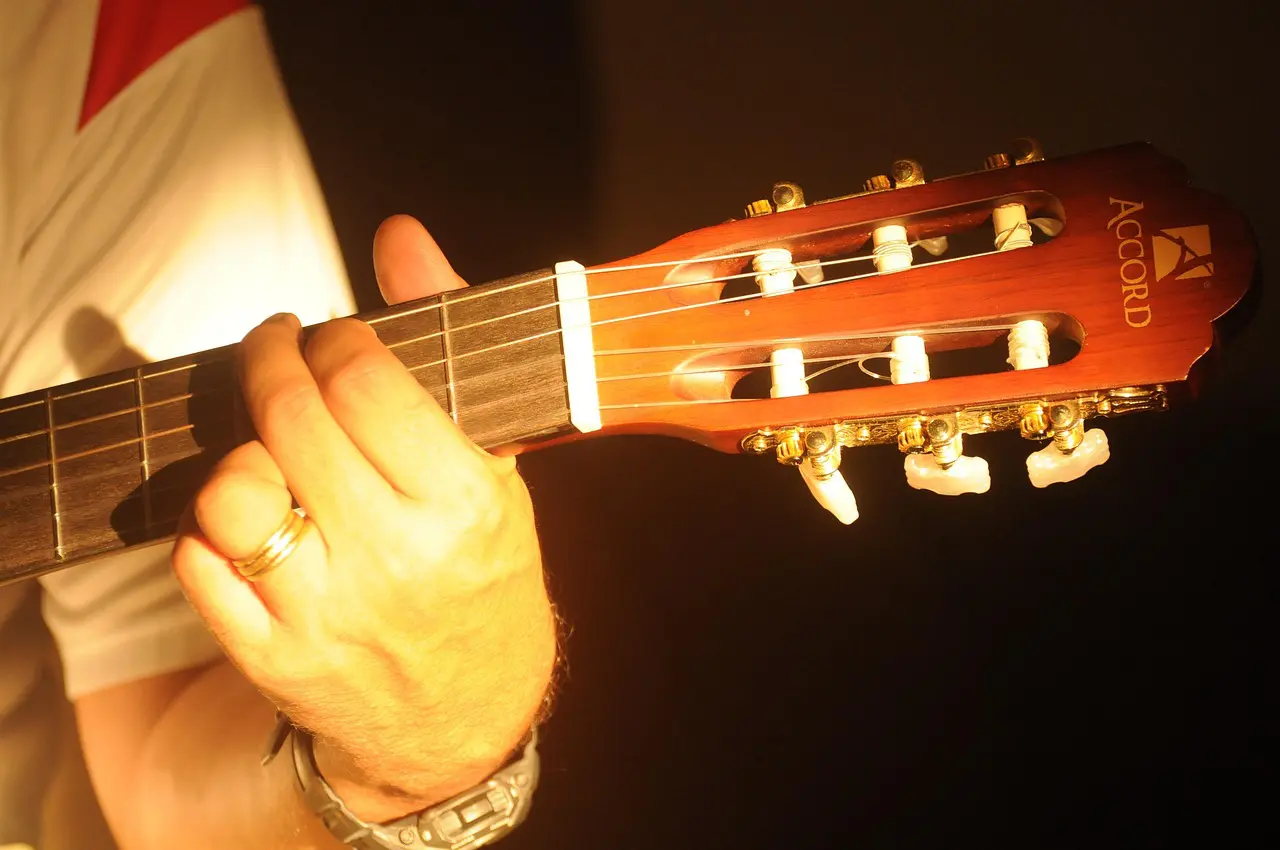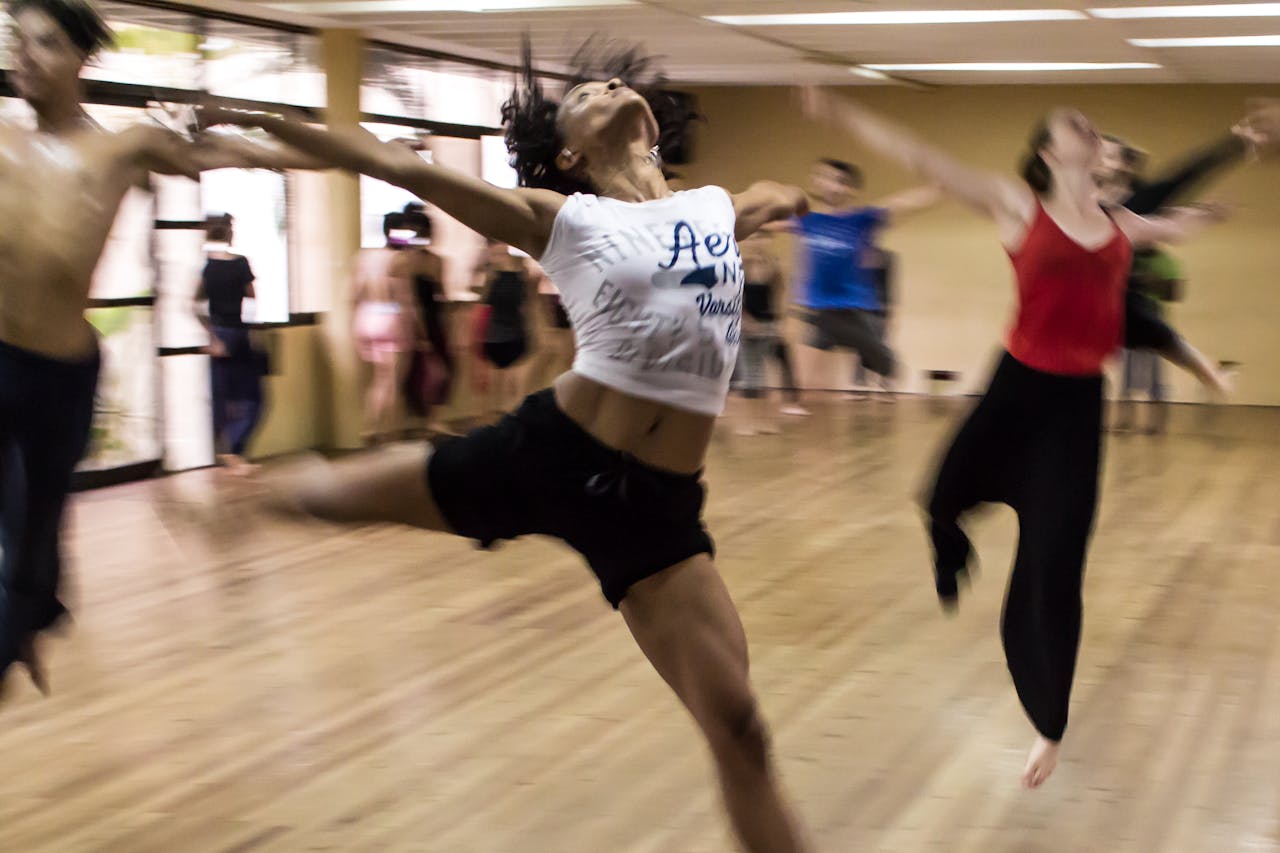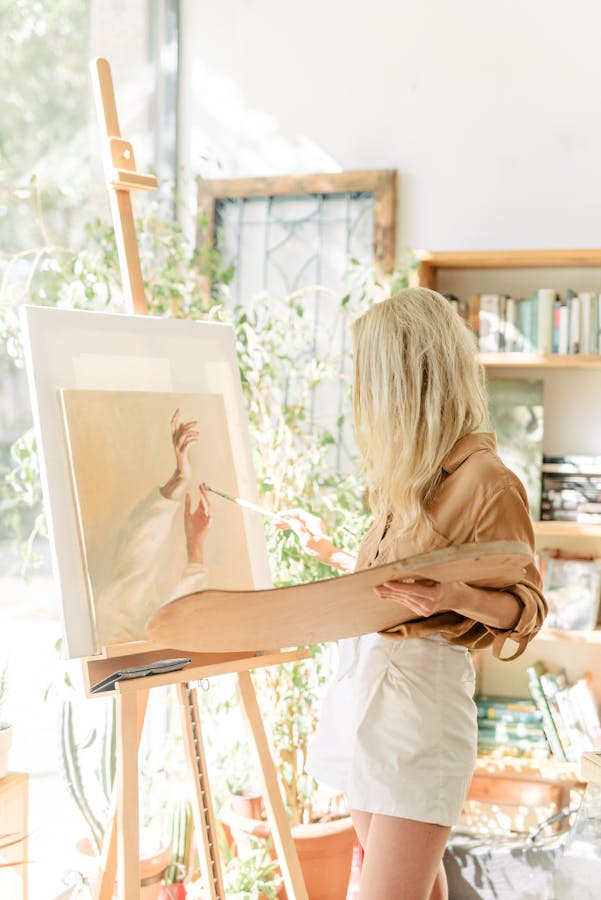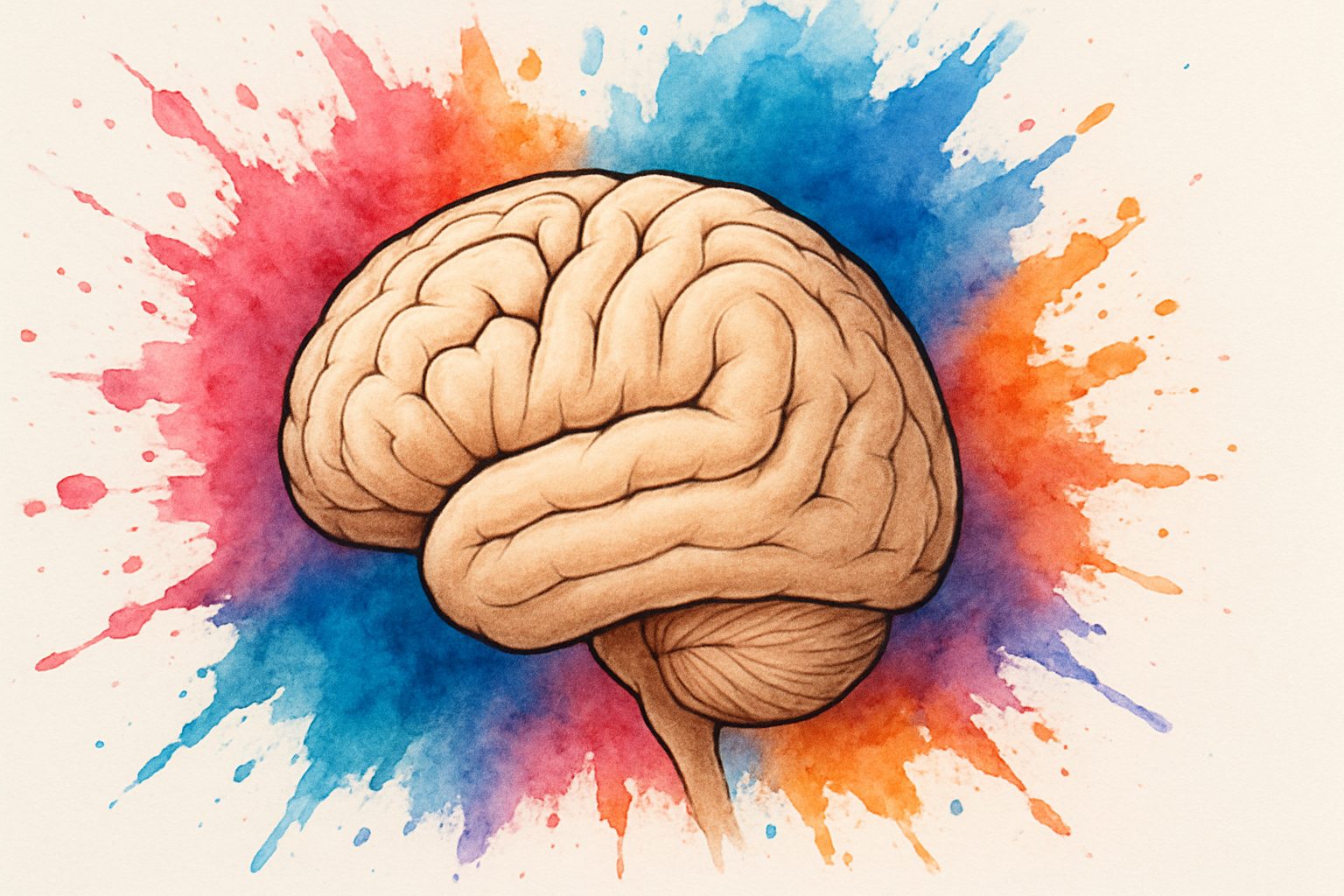We all want to stay sharp, focused, and full of energy as we age. But while most of us know that sleep, exercise, and a balanced diet are key, there’s one powerful tool that often gets overlooked: creativity.
And now, scientists say it might actually help your brain stay younger.
As our population ages and cognitive health becomes a growing concern (frankly, it has become important for me too, thus this article), researchers are increasingly studying lifestyle habits that may slow brain aging – and creativity is emerging as a surprisingly powerful factor.
A large international study published in Nature Communications in October 2025 found that people who regularly engage in creative activities – such as music, dance, visual arts, or strategy video games – had lower predicted brain ages than non-creatives. In plain terms, their brain activity patterns looked about five years younger than their chronological age.
Even better: participants who started learning something new showed measurable improvements after just a short time.
Sound too good to be true? Let’s look at what the science actually found, what other studies confirm, and how you can start using creativity to support your brain – beginning today.
What the “Younger Brain” Study Really Found
The Nature Communications paper, titled “Creative experiences and brain clocks,” involved more than 1,400 participants from around the world. Researchers used advanced brain-imaging and machine-learning techniques to estimate each person’s “brain age” – how old their brain appeared based on neural efficiency and connectivity patterns.
Then they compared those brain ages to participants’ actual ages.
The result?
Experts in creative domains – musicians, dancers, visual artists, and gamers – had brains that looked about five years younger than average.
Beginners who trained in creative tasks for a short time also showed positive shifts toward a “younger” brain profile.
The study suggests that engaging in creative pursuits might strengthen brain networks that support memory, attention, and problem-solving — the very areas most affected by aging.
Importantly, the authors caution that the results show a correlation, not causation. We don’t yet know if creativity directly causes the brain to stay young, or if people with more efficient brains naturally gravitate toward creative hobbies. But taken with other research, it paints a very promising picture.
Creativity, Brain Plasticity, and Why It Matters
The human brain is far more adaptable than we once believed. Scientists call this ability to form new connections neuroplasticity – the foundation of brain health and learning at any age. It’s what allows us to learn new skills, languages, or movements, no matter our age.
Creative activities – especially those that combine mental focus, physical movement, emotion, and social interaction – appear to be particularly powerful triggers for neuroplasticity.
A review published in The Lancet in 2024 highlighted the broad health benefits of arts engagement, from improved mood and reduced loneliness to measurable effects on cognitive function.
The World Health Organization has echoed these findings, emphasizing that the arts can contribute to both physical and mental health across the lifespan.
In short: creativity isn’t just self-expression. It’s brain training – wrapped in joy.
The Science Beyond the Headlines
This isn’t the first time researchers have found creative pursuits linked to brain health. In fact, there’s a surprisingly long list of studies pointing in the same direction.
Music and brain aging
A study in NeuroImage: Clinical found that musicians had a smaller “brain age gap” than non-musicians, suggesting musical practice helps maintain structural and functional integrity over time. (See the study here.)
I admit I like this, because ever since I was little, I would create tunes in my mind. Plus, my family learns to play various instruments, so good news for them too!
Dance and cognition
A 2021 meta-analysis concluded that dance improves memory, executive function, and attention in older adults. The combination of rhythm, coordination, and aerobic activity makes it a “full-brain workout.”
I am not much of a dancer (though I keep saying I will take lessons), but this is really good news for all of us!
Gaming and problem-solving
A 2020 study found that adults who played complex strategy video games showed improvements in reaction time, spatial awareness, and cognitive flexibility.
I actually saw this in my case – I always played games that require fast thinking and reflexes! 🙂
Visual arts and mental health
Drawing, painting, and other visual arts have been linked with lower stress and improved emotional regulation in multiple studies summarized by the Lancet Arts and Health series.
Together, these findings suggest that creativity engages the same neural networks that keep our minds adaptable and resilient.
What Makes Creativity So Powerful for the Brain?
Scientists think creative activities boost brain health through several overlapping mechanisms.
1. Novelty and challenge
Learning something new forces your brain to build fresh connections instead of relying on familiar ones. That ongoing challenge stimulates growth.
2. Multi-sensory integration
Whether you’re painting, dancing, or playing an instrument, creative work engages multiple senses – sight, sound, touch, and movement. This strengthens communication between different brain regions.
3. Emotional engagement
Creative “flow” states lower stress hormones like cortisol, which in high levels can harm neurons over time. Engaging in something you love provides emotional balance that’s measurable in the lab.
4. Social connection
Group art, music, or dance classes add a social layer – something strongly associated with lower dementia risk and longer life expectancy.
A 2024 review on cognitive reserve found that lifelong learning and social engagement together build mental resilience against cognitive decline.
When you put these elements together – novelty, emotion, coordination, and connection – you get an activity that trains the brain on multiple levels at once.
That’s why scientists now describe creativity as a “multi-domain brain workout.”
How You Can Start Now – No Matter Your Age or Skill Level
You don’t have to be a professional musician or artist to benefit.
In fact, the Nature Communications study showed that even new learners saw measurable improvements.
Here are some simple, low-pressure ways to add creativity to your routine starting today:
1. Move with rhythm
Put on your favorite song and dance for ten minutes. You don’t need choreography – just movement. Dance combines aerobic exercise (which the CDC recommends for heart and brain health) with coordination and memory challenges.
2. Pick up an instrument or sing
Learning a few chords on a guitar or simply singing regularly strengthens attention, memory, and auditory processing.
Musical engagement has been linked to improved working memory and emotional regulation in several studies (NeuroImage, 2018).
3. Try sketching or doodling
Visual art encourages observation and fine motor control while reducing anxiety.
A Lancet review found that creative drawing or painting can lower stress even in people with no art experience.
4. Learn something strategic
Games that require planning – like chess, sudoku, or modern board and strategy video games – stimulate your prefrontal cortex, the brain’s decision center.
As mentioned above, a 2020 Scientific Reports study found measurable gains in focus and problem-solving after regular gaming practice.
5. Make something with your hands
Knitting, pottery, gardening, or baking all provide tactile feedback that grounds you in the present moment. Psychologists call this mindful making, and it’s been shown to lower stress and improve concentration.
6. Write something – anything
Whether it’s journaling, poetry, or short stories, writing helps organize thoughts and regulate emotion.
University of Texas research on expressive writing shows reduced stress and improved mood after as little as 15 minutes a few times per week.
The point isn’t perfection – it’s participation.
Your brain doesn’t care how good you are. What matters is that you keep learning and challenging it in enjoyable ways.
Creativity and the “Big Picture” of Brain Health
While creativity is powerful, it’s not the only thing that matters. It works best as part of an overall healthy lifestyle.
Modern neuroscience now views brain health as part of whole-body wellness – a combination of creativity, movement, rest, and emotional balance.
The American Heart Association emphasizes that factors like sleep, physical activity, and managing stress play huge roles in protecting the brain.
Creativity can make those easier – because when you do something you love, you’re more likely to move, relax, and connect with others.
Pair that with regular physical activity (as the CDC guidelines suggest: 150 minutes of moderate exercise weekly) and a balanced diet, and you have the foundation for lifelong brain health.
In other words, think of creativity as the spark that keeps all your other healthy habits alive.
What We Still Don’t Know
Scientists are quick to point out that creativity isn’t a magic bullet.
We still don’t know how long these effects last, how much practice is required, or whether certain creative outlets have stronger benefits than others.
But what’s clear is that the brain responds quickly. Even short-term creative learning in the Nature Communications study changed brain activity patterns within weeks.
That’s reason enough to believe it’s never too late – or too early – to start.
A Note of Caution – Disclaimer
This information is for general wellness, not medical advice.
If you have neurological, musculoskeletal, or psychological conditions, consult your healthcare provider before starting physically demanding creative activities like dance or drumming.
And yes – balance matters.
Moderation is key: endless screen gaming or late-night painting marathons won’t do your brain any favors if they cut into sleep or social life.
Creativity works best alongside good rest, regular exercise, and human connection – the cornerstones of every strong mind.
Key Takeaway
You don’t have to wait for the weekend or retirement to begin.
Start today – with a song, a sketch, a dance, a recipe, a story.
Because the science keeps stacking up: creativity helps your brain stay flexible, curious, and connected – one of the most natural ways to support long-term brain health and slow cognitive aging.
It might not stop time, but it helps your brain use time better.
So go ahead – create something today.
Your future self will thank you.
I recently presented you on this site some studies with different recommendations of EASY things to do to live happily and long:
- Scientists Reveal the Unexpected Longevity Habit That Costs Nothing
- Scientists Say This Overlooked Habit Could Add Years to Your Life
- Scientists Say People With This Mindset Are Far More Likely to Reach Age 90+
- Add Decades, Not Just Years: 8 Habits That Could Add 20–25 Years to Your Life (Backed by a Massive Study)
- Build a Night Routine That Boosts Longevity – What Studies Show
- Want a Longer, Happier Life? Scientists Say This 1-Hour Habit Could Be the Key
- Want to Live Longer? Studies Say These Mental Habits May Help (No Sweat Required)
- Eat Earlier, Live Longer? What a New Study Says About Breakfast Timing, Aging, and Longevity
Frequently Asked Questions About Creativity and Brain Health
Many readers wonder how creativity truly affects brain health. Below are science-backed answers to the most common questions about how creative activities influence brain aging, memory, and overall cognitive well-being.
1. Can creative activities really slow brain aging?
Current research, including a 2025 Nature Communications study on “brain clocks,” suggests that creative activities can support brain health by maintaining neural efficiency and cognitive flexibility. While it doesn’t stop aging, it can support healthier brain function over time – especially when combined with good sleep, physical activity, and social interaction.
2. What types of creative activities are best for brain health?
Studies highlight multiple forms of creative engagement – music, dance, visual arts, and even strategy games – that boost cognitive health and neuroplasticity. The key is regular engagement in something that challenges and interests you – not perfection.
3. How often should I do creative activities to see results?
There’s no single “magic number.” Even short, consistent sessions (10–30 minutes several times a week) can make a difference. The 2025 study found measurable brain changes after brief creative learning periods, suggesting that steady participation matters more than intensity.
4. Does creativity help prevent dementia or Alzheimer’s disease?
There’s no evidence that creativity directly prevents dementia, but research shows that creative activities and lifelong learning build cognitive reserve, which supports brain resilience. Always consult your doctor for personalized medical advice.
5. I’m not artistic. Can I still benefit from creativity?
Absolutely. Creativity isn’t limited to painting or music – it includes cooking, journaling, gardening, or even strategic games. The brain benefits most from novelty, curiosity, and enjoyment – not talent.
6. Can creative activities replace exercise or medical treatment?
No. Creative engagement supports mental well-being and neuroplasticity but should complement, not replace, evidence-based health habits like exercise, sleep, and medical care. Think of creativity as part of a full brain-health toolkit.
7. Are there risks or downsides to creativity for the brain?
Generally, no – unless the activity interferes with essential needs like rest or social life. Balance matters: creative hobbies should energize, not exhaust you. Moderation is key to sustainable brain health.
8. How is “brain age” measured in studies like the one in Nature Communications?
Researchers use advanced imaging and machine-learning models called “brain clocks” to estimate biological brain age from patterns of neural activity. A lower predicted brain age suggests more efficient brain function – though it doesn’t necessarily mean someone is “younger” in every sense.
9. What’s the simplest way to start a creative habit for better brain health?
Start small – 10 minutes a day of something new and enjoyable. It could be sketching, learning an instrument, dancing, or journaling. The key is consistency, novelty, and joy. Even short bursts of creativity can activate brain networks that support memory and emotional balance.
Photo sources: 1, 2, 3, 4, 5 – generated with ChatGPT

